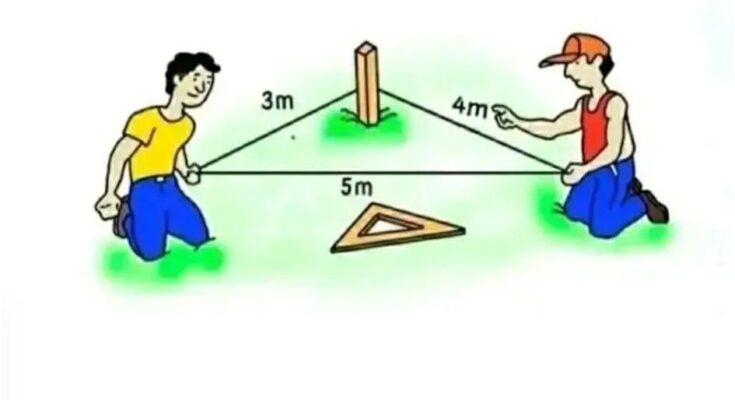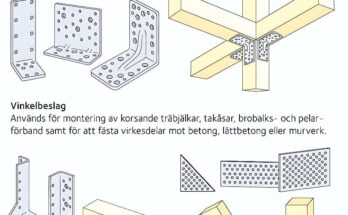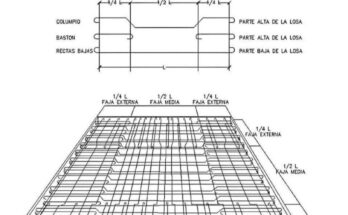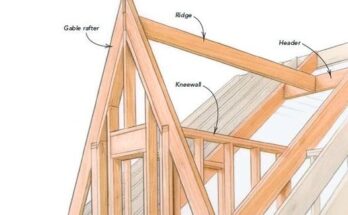The image depicts a method for laying out a rectangular foundation using the 3-4-5 triangle rule and string lines.
Top Panel: Establishing a Right Angle
- Two individuals are using a string to create a triangle.
- One segment of the string is measured as 3 meters.
- Another segment is measured as 4 meters.
- The third segment, connecting the ends of the 3m and 4m segments, is measured as 5 meters.
- A set square (triangle ruler) is shown near the 3-4-5 triangle, visually reinforcing the concept of a right angle.
- The 3-4-5 triangle is a practical application of the Pythagorean theorem ($\(a^2 + b^2 = c^2\)$), where $\(3^2 + 4^2 = 9 + 16 = 25 = 5^2\)$. This confirms that the angle opposite the longest side (the 5-meter side) is a 90-degree right angle.
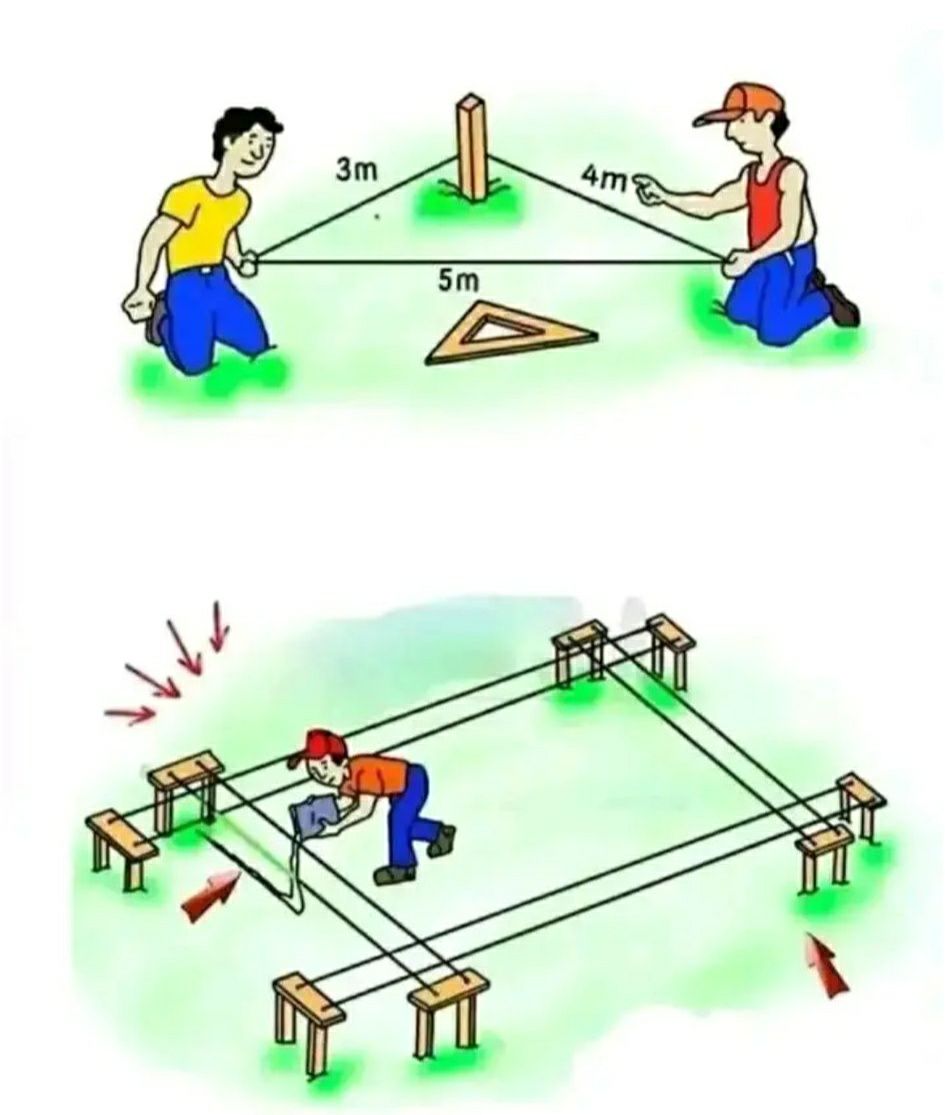
Bottom Panel: Laying Out a Rectangular Foundation
- Several wooden stakes or supports are driven into the ground, outlining the corners of a rectangular area.
- String lines are stretched between these stakes, defining the boundaries of the foundation.
- One person is shown using a tool (likely a plumb bob or level) to ensure the stakes are positioned correctly, possibly referencing the string lines.
- The arrows suggest the process of adjusting or aligning the stakes and string lines to create a precise rectangle.
- The principle demonstrated in the top panel (the 3-4-5 triangle) would have been used to ensure that the corners formed by the string lines are right angles, thus creating a rectangular shape. For example, by measuring 3 units along one string line from a corner stake and 4 units along the adjacent string line, the diagonal distance between these two points should be 5 units if the corner is a perfect 90 degrees. This process would be repeated for each corner of the foundation layout.
In essence, the image illustrates a simple and effective method for establishing perpendicular lines and creating a rectangular layout on the ground using basic measuring tools and the geometric principle of the 3-4-5 triangle. This technique is commonly used in construction and surveying for setting out foundations, walls, and other rectangular structures.
